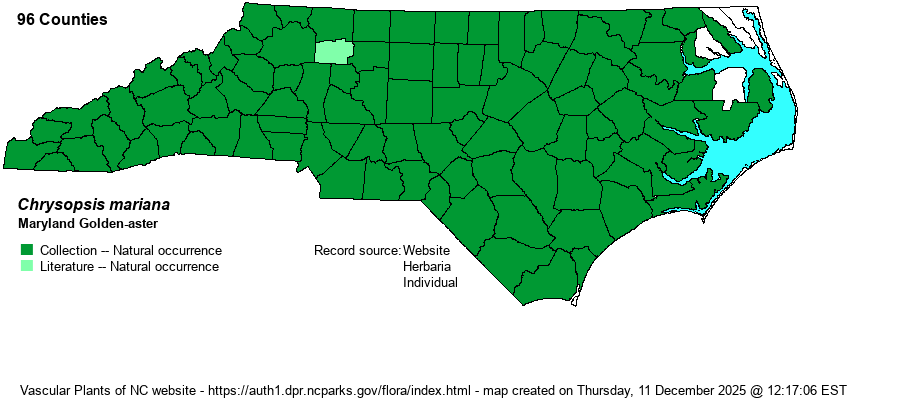| Author | (L.) Elliott | |
| Distribution | Throughout the state, but absent from the Outer Banks and other barrier islands.
RI to southern OH and western TN, south to central FL and southeastern TX. | |
| Abundance | Generally common, to locally abundant, essentially statewide. This is one of our most widespread wildflowers, familiar to all naturalists. | |
| Habitat | Dry woodlands (mostly on edges) of various kinds, generally with some species of pine, oak, hickory, and Flowering Dogwood (Cornus florida). Openings in the same forests, rocky slopes, barrens, clearings, roadsides, powerlines, and even in yards. |
| Phenology | Flowering and fruiting late July-October. | |
| Identification | Stems are erect or leaning, 1-2.5 feet tall, and leafy throughout. Basal leaf blades are elliptical with a tapering stem; middle and upper stem leaves are much smaller, narrower, and stemless. When young, the leaves may have cottony hairs, but later become essentially glabrous. The inflorescence has several short branches terminated by bright yellow heads, the ray florets 10-20 mm long, and numerous golden-yellow rays. | |
| Taxonomic Comments | In some older texts treated as Heterotheca mariana.
| |
| Other Common Name(s) | None | |
| State Rank | S5 | |
| Global Rank | G5 | |
| State Status | | |
| US Status | | |
| USACE-agcp | UPL link |
| USACE-emp | UPL link |

